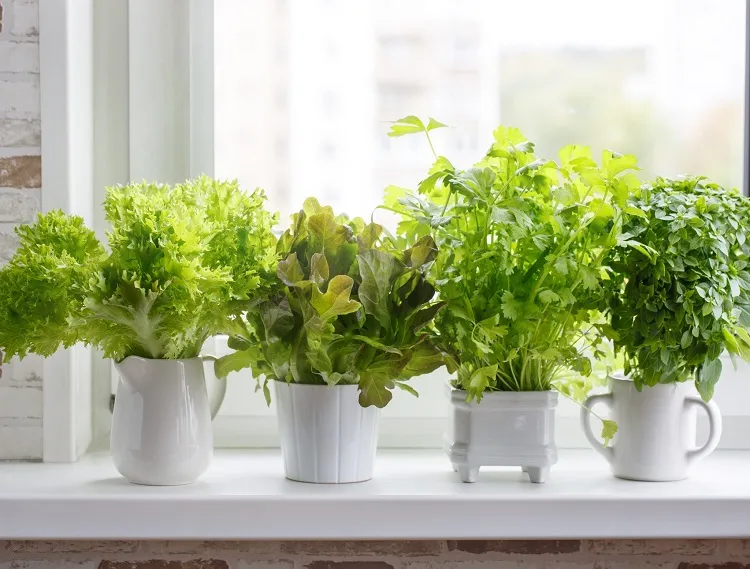Do you love the idea of cooking with herbs, grown by yourself? You will probably object, that in the apartment you lack the space for having a garden, and your balcony is too narrow. Don’t worry, you can still enjoy the convenience to have these fresh and tasty plants for your dishes. All you need is to organize a DIY indoor herb garden, and your favorite herbs will add flavor and aroma to your culinary creations. With having an idea in mind and some basic supplies, you can have a thriving garden right in your kitchen or in some other room with a large window. We are going to suggest you some easy ideas for creating your healthy herb growing project.
Which Herb Can be Grown Indoors?
Certain varieties thrive better in these conditions, where the sunlight is not so much intensive compared to outside. Here are some herbs that are well-suited for cultivation in your DIY indoor herb garden:
- Basil: This popular herb is relatively easy to grow indoors. It enjoys warmth and plenty of sunlight, making it an excellent choice for a sunny windowsill. Basil adds a fresh and aromatic touch to dishes, as well as to pasta, salads, and pesto sauces.

- Mint: This plant is known for its refreshing aroma and versatility in both sweet and savory recipes. Mint is a vigorous grower that adapts well to indoor conditions. However, it’s best to grow mint in a separate container, as it tends to spread rapidly.
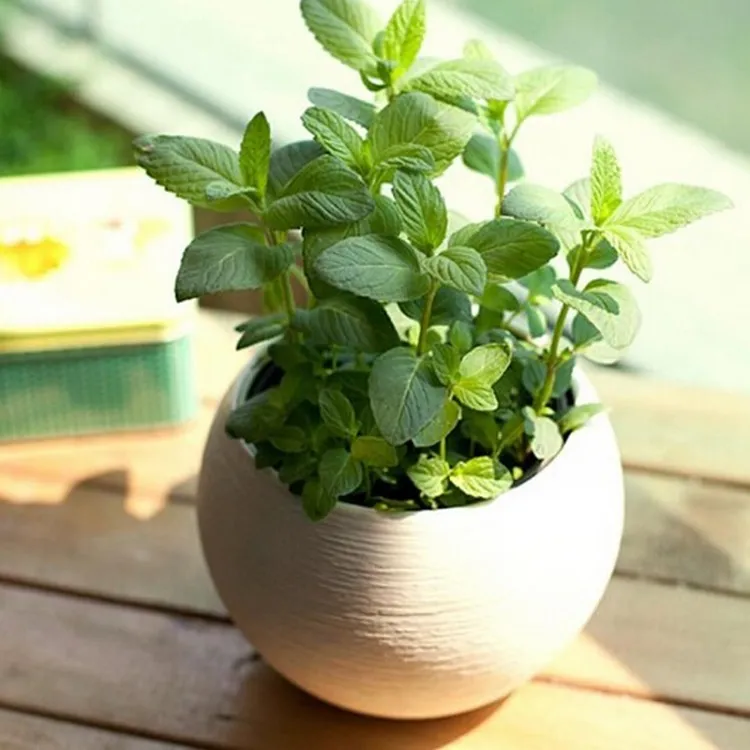
- Thyme: It is a low-maintenance herb that adds a delicate and earthy flavor to a variety of dishes. Thyme prefers bright light and moderate watering, making it suitable for a sunny indoor spot or under grow lights.
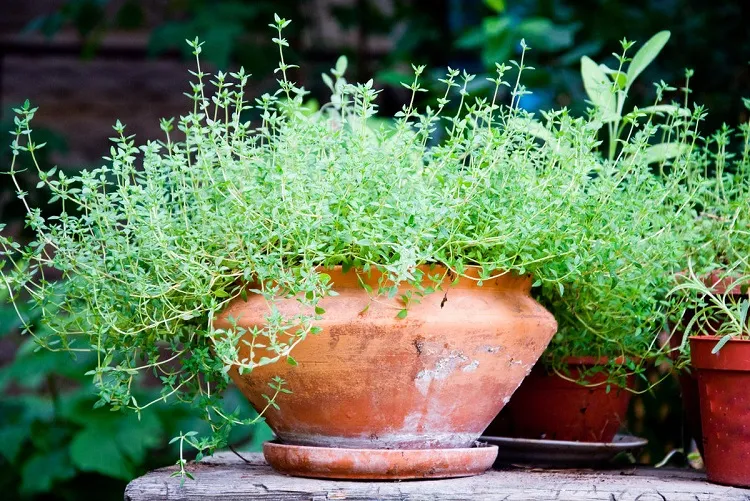
- Chives: The plant is a member of the onion family, providing a mild onion-like flavor to dishes. Chives grows well in containers and can tolerate slightly lower light conditions than other herbs require. This plant is often used as a garnish or in salads, soups, and creamy sauces.
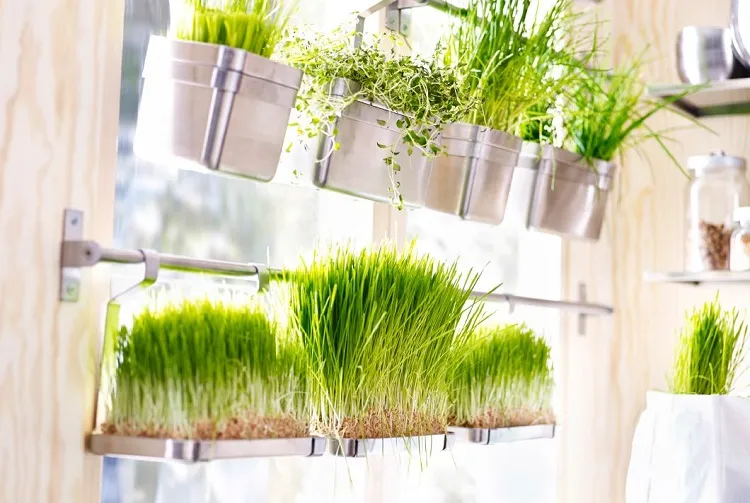
- Parsley: It is a versatile herb that is commonly used as a garnish or to enhance the flavor of various dishes. Parsley prefers moderate to bright light, and well-drained soil. Regular harvesting promotes bushier growth.

DIY Indoor Herb Garden Ideas
By organizing your own DIY indoor herb garden, you can benefit from having your daily fresh bunch of parsley, mint or other plants’ leaves for your salads or dishes all year round.
Organizing Mason Jar Herb Garden

This is one of the simplest and most convenient ways to grow herbs indoors. Here’s how you can create your own Mason jar DIY indoor herb garden:
- Prepare your supplies: You’ll need mason jars (one for each herb), potting soil, and herb seeds or seedlings.
- Fill in the Mason jars: Put suitable potting soil in each jar.
- Choose the herbs: Then plant the seeds or seedlings in the soil, following the instructions on the packet.
- Find a suitable spot: Place the Mason jars in a sunny spot near a window, and water the plants regularly.
- Harvest the leaves: As your herbs grow, snip off the desired amount of leaves for your dishes.
Herb Window Garden: Instructions

Having a DIY indoor herb garden by your window is a fantastic way to utilize natural light and keep your herbs within arm’s reach. Follow these instructions to set and keep it:
- Look for a suitable window: Choose one that receives a minimum of six hours of sunlight per day.
- Prepare the pots: Fill each of them with potting soil, leaving some space at the top for watering.
- Plant your herbs: Plant the herb seeds or seedlings in the soil.
- Place the pots: Arrange them on the windowsill or on a shelf near the window.
- Water regularly: Allow the soil to dry slightly before watering.
- Fertilize occasionally: Herbs benefit from regular feeding. Use a balanced, water-soluble fertilizer and apply once every few weeks.
- Enjoy the harvest: Cut the herbs’ leaves just above a leaf node to promote new growth.
How to Make a Vertical Herb Garden?
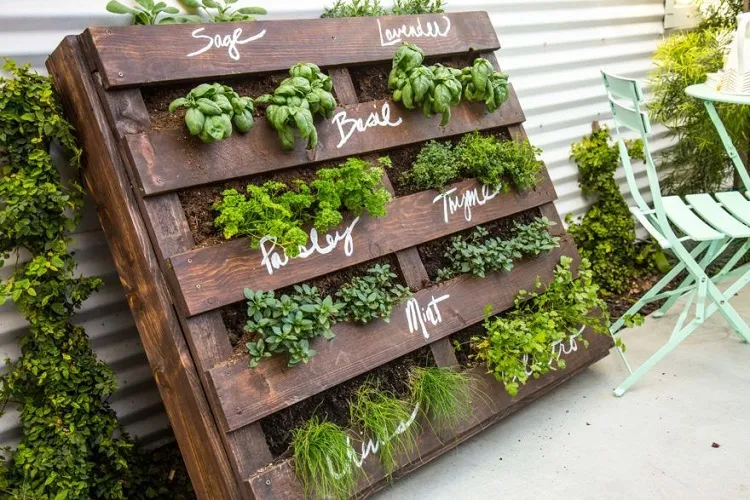
If you have limited space, but still want to grow herbs, enjoying the fresh flavors and aromas in your culinary ideas, set a vertical pallet herb garden. Here’s how to organize one:
- Take a wooden pallet: Look for a sturdy one.
- Prepare your pallet: Clean and sand it, then paint or stain the pallet.
- Add a backing: Attach a waterproof material to the back of the pallet to prevent water damage to your wall.
- Attach the containers: Use screws or ties for the purpose.
- Add soil and the plants: Use potting soil and plant the herb seeds or seedlings.
- Care and water: Hang the pallet vertically on a wall and water the herbs regularly.
- Harvest and add to dishes: As your herbs flourish, harvest them and enjoy the flavors.

